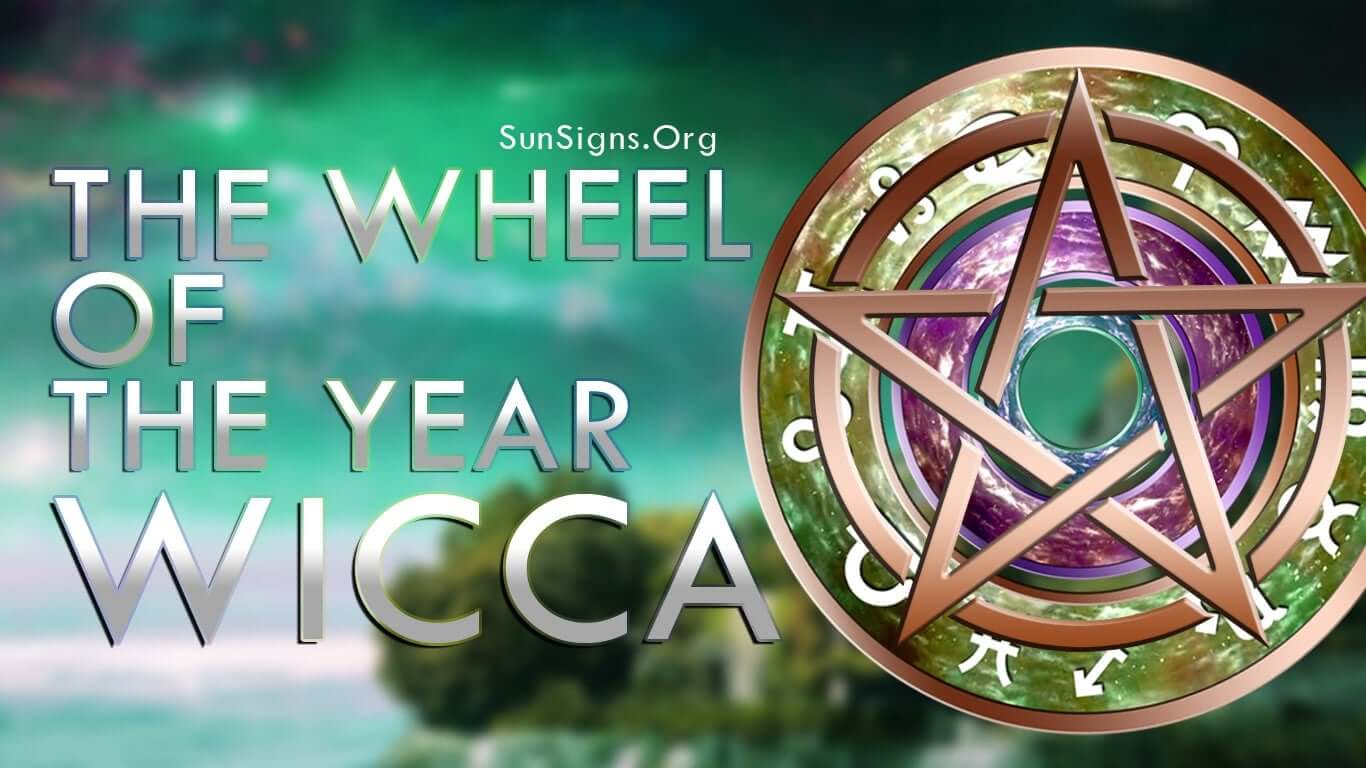What is the Wicca Wheel of the Year?
The Wheel of the Year is the term for the 8 seasonal holidays celebrated by practitioners of the various traditions and spin-off traditions of Wicca, Witchcraft or Paganism. They are traditionally celebrated on the four solstices, and the four equinoxes throughout the year. At their core they represent a cycle of birth, life, death, and rebirth, as represented by the four seasons and the lesser steps in between.
The holidays put together in the Wheel of the Year are drawn from many Wicca traditions, mostly coming from the Germanic areas and the British Isles. Their celebration typically takes place either on the astronomically correct date that represents the actual day of the seasonal progression, or on a day near to the same. For many, but not all, it is the recognition of the passage of the wheel, not the accuracy of the precise date that matters.
The Seasonal Holidays, also known as Sabbats, are listed below along with a brief description of their meaning within the Wheel of the Year.
1. Yule:
Date: Dec 21st or Winter Solstice
Meaning: This holiday celebrates the end of winter, and the return of the Sun. To those of used to thinking of winter in modern terms, it may seem like this is the middle of winter. In fact, this is the longest night of the year, and every day thereafter sees the return of a little more daylight. As such, this is seen as the rebirth of the sun god. The candles and lights on your Christmas trees represent the rebirth of the light.
2. Imbolc:
Date: Feb 1st
Meaning: Known in Ireland as Brigid’s day, or Lá Fhéile Bríde, or more modernly “Saint” Brigid’s day. This holiday represents the first day of spring and is therefore a fertility and child-birth ritual. It has a deep tie with milk, partially driven by the ewes beginning to lactate around this time in preparation for birthing.
Wicca wheel of the Year
3. Ostara:
Date: Spring Equinox
Meaning: Another Fertility ritual, Ostara is the day when the days are officially longer than the nights, and we are fully into Spring and heading for Summer. Often falling in line with the more modernly practiced Easter, it is notable that the Goddess Ostara, for whom this is named, is associated with hares and eggs.
4. Beltane:
Date: April 30th, May 1st
Meaning: Being the last of the purely spring festivals, this is also a fertility ritual, celebrated most commonly with a maypole and a crowning of a May Lord and Lady. This fertility ritual also coincides with the male Sun god reaching his maturation in youth, but not quite an ‘adult’ in the traditional sense. As such, it is a season of budding sexuality and symbolism of this is rife at this time.
Wicca wheel of the Year
5. Litha:
Date: Summer Solstice, Approximately June 21st
Meaning: This, along with Yule, Ostara, and Mabon, is one of the four Solar holidays, tied to the equinoxes and solstices. This is the height of Summer, and as such every day that follows will have a longer and longer night.
6. Lammas/Lughnasadh:
Date: Jul 31 – Aug 1
Meaning: This is the first of three Wiccan harvest festivals. The god has passed his prime, and is beginning to fade as the harvest comes. Figures of the god made of bread are broken and eaten, celebrating the wealth and life that the harvest brings, and honoring he who gave his life to give it (the sun god).
Wicca wheel of the Year
7. Mabon:
Date: Sept 21-23, The Autumn Equinox
Meaning: This is the second of the harvest festivals, a ritual thanksgiving of the fruits of the earth, recognizing the need to share the wealth of their harvest to ensure a good harvest the following year.
8. Samhain:
Date: Oct 31st
Meaning: This is the final harvest Sabbat, and it’s connection with the dead and their walking the earth paid a large contribution to our modern practices of Halloween. This is recognized as the time to recognize those who have died, and many recognize this as the death of the Sun God, and the beginning of his journey to the land of the dead and back, where he will be reborn on Yule.
See Also:
- How To Make And Use A Pendulum?
- Can Witches Really Fly?
- 4 Magical Herbs And How to Use Them?
- Feng Shui Tips for Thanksgiving
- Crystal Tarot Healing
Wicca Wheel Of The Year
Yule
Imbolc
Ostara
Beltane
Litha
Lammas
Mabon
Samhain
 Sun Signs Everything Under The Sun!
Sun Signs Everything Under The Sun!
